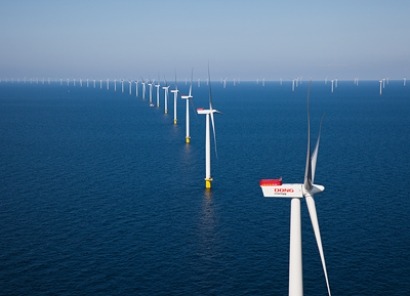
GCube’s new report, entitled “Vertical Limit: When is bigger not better in offshore wind’s race to scale?”, is compiled from 10 years of the company’s claims data and draws on evidence from experts across the offshore wind sector to demonstrate how offshore wind’s risk landscape has significantly shifted, as manufacturers push to develop bigger machines, faster.
Over the past five years, the race to scale turbine technologies has seen the leap from 8 MW to 18 MW turbines occurring in a fraction of the time it took to go from 3 MW to 8 MW. While this is a fantastic technological achievement, such rapid commercialisation of ‘prototypical’ technologies is now leading to a concerning number of losses, and subsequently piling financial pressure on manufacturers, the supply chain and the insurance market.
Amongst the findings of the report, underwriters are concerned that 55 percent of all claims by frequency come from component failures during construction from 8 MW+ machines, which now represent a larger share of Total Insured Values (TIVs). This, combined with an increase in average offshore wind losses, up from £1 million in 2012 to over £7 million in 2021, is creating unsustainable financial risk, right when scaling is needed to bring about the energy transition.
Another major finding is that 8 MW+ machines are suffering from component failures within the first 2 years of operation. This is juxtaposed against the significantly shorter timeframe (5yrs) for component failures during operation in the 4-8 MW category of turbines and points to the urgent need to address product quality and reliability – a key recommendation of the report.
The situation may create issues for the insurance market as traditional energy underwriters deploy capacity into the renewables market by offering broad policies and low premiums. GCube argues that new entrants must learn from challenges in the onshore renewables market by taking a more realistic approach to pricing and T&Cs, otherwise risk substantial losses that would further exacerbate the current instability in offshore wind markets.
The warning shot comes at a time when the insurance market for onshore renewables continues to harden after a string of costly losses from Nat Cat and supply chain issues. The report states how new turbine equipment issues in the offshore market may be going unrecognised on account of other prominent sources of losses, such as cable failure.
“The push to rapidly develop more powerful machines is piling pressure on manufacturers, the supply chain, and the insurance market” said Fraser McLachlan, CEO, GCube Insurance. “Scaling up is an essential part of driving forward the energy transition, but it is now creating growing financial risks that pose a fundamental threat to the sector. We advise manufacturers to focus on improving the quality and reliability of a reduced number of products to put themselves back on a sustainable path of development. At the same time, developers must support manufacturers by sharing the risk of larger machines more equitably and open their lending books to supply chain companies. Vessels are going to be one of the biggest bottlenecks in building offshore projects, and developers are in a powerful position to invest in supply chain companies at the benefit of the entire sector. New entrants to the insurance market need to build their knowledge and experience of the nuances of renewable energy technologies. In doing so, they’ll be pushed to take an approach to pricing and T&Cs that’s based on the growing risks within the sector – and better support offshore wind’s ambitions to bring about the energy transition.”
For additional information:

